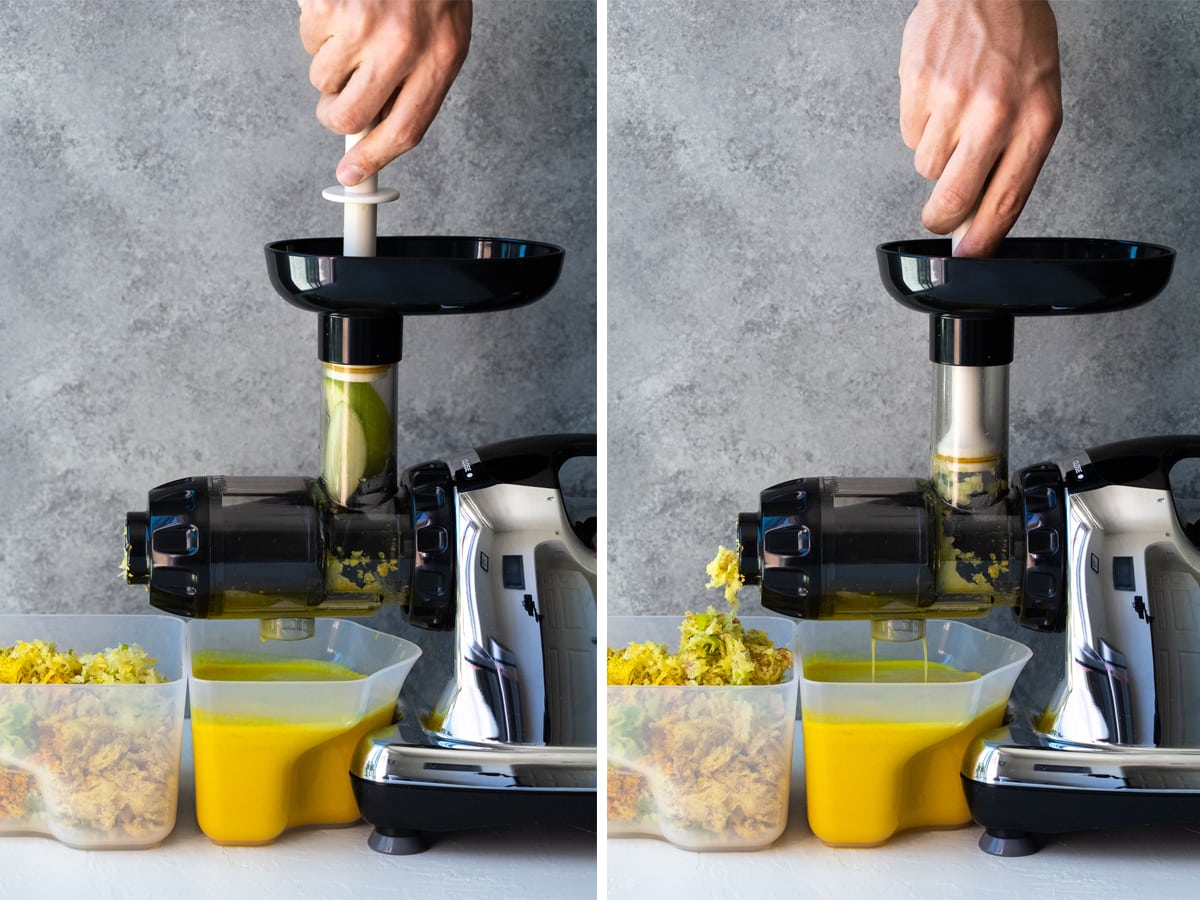
Introduction:
Ginger is a versatile and health-boosting root that can be juiced to take full advantage of its nutrients and flavor. Whether for a refreshing shot, a spicy addition to your juice blends, or its numerous health benefits, understanding how to juice ginger effectively is key. This guide explores the best practices for juicing ginger, the types of juicers that work best, health benefits, and potential recipes to incorporate ginger juice into your diet.
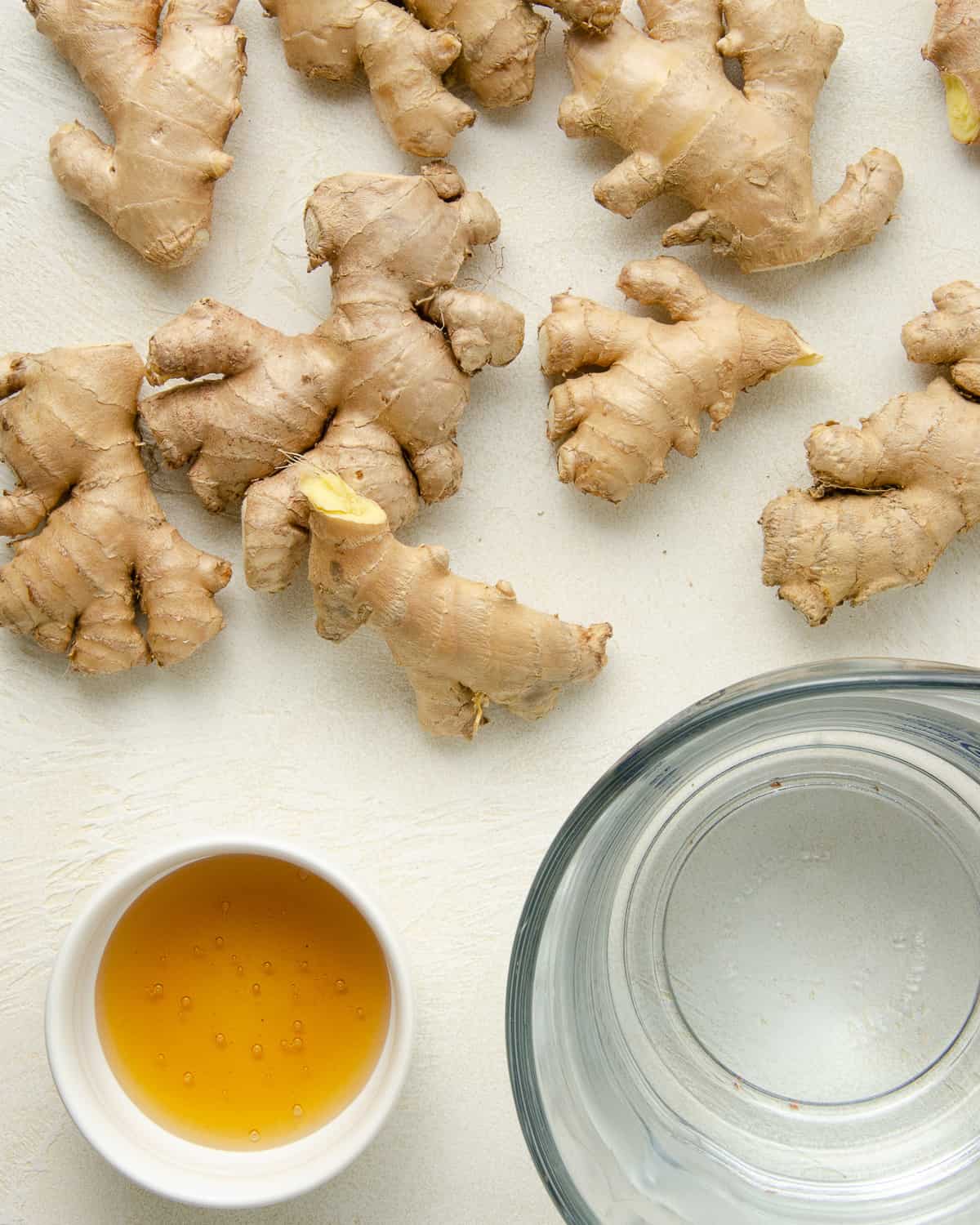
Can You Put Ginger in a Juicer:
What Are the Best Practices and Benefits?
Choosing the Right Juicer:
What Types of Juicers Work Best for Ginger?
The type of juicer you use can significantly affect the quality and quantity of ginger juice extracted.
Centrifugal Juicers:
High-Speed Juicing:
Quick but Less Efficient: Centrifugal juicers operate at high speeds, using a spinning blade to chop the ginger into small pieces before forcing the juice through a mesh filter. They are generally faster and more convenient for juicing larger quantities and harder produce. However, they may not extract as much juice from fibrous roots like ginger compared to other types of juicers.
Ease of Use: Centrifugal juicers are easy to use and clean, making them a good choice for those who juice regularly and quickly. But for getting the most out of ginger, there might be more efficient options.
Masticating Juicers:
Slow and Steady:
Higher Yield and Nutrient Retention: Masticating juicers, also known as slow or cold press juicers, use a slow-turning auger to crush and press ginger, extracting more juice and preserving more nutrients. These juicers operate at lower speeds, minimizing heat and oxidation, which can degrade nutrients in ginger juice.
Best for Tough Ingredients: These juicers excel at handling tough, fibrous produce like ginger, making them ideal for maximizing juice yield and preserving the beneficial compounds found in ginger.
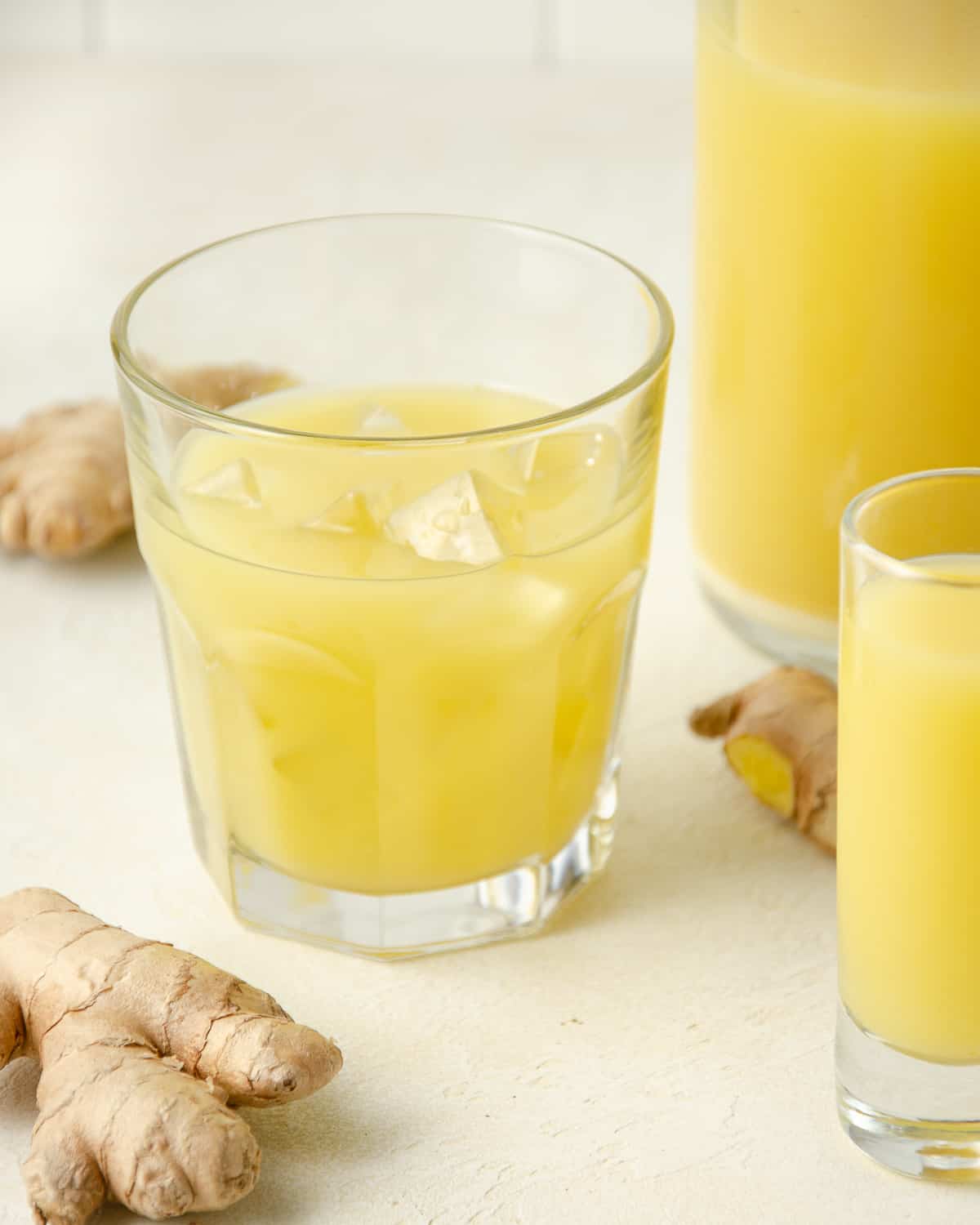
Preparation Steps:
How Should You Prepare Ginger for Juicing?
Proper preparation of ginger is essential to ensure smooth juicing and optimal yield.
Selecting Ginger:
Fresh and Firm:
Optimal Quality: Choose fresh, firm ginger roots with smooth skin. Avoid ginger that is wrinkled, soft, or moldy, as these are indicators of spoilage and reduced flavor.
Washing:
Remove Dirt:
Clean Thoroughly: Rinse the ginger under cold running water to remove any dirt and debris. Use a vegetable brush to scrub the skin gently, ensuring all impurities are washed away.
Peeling:
Skin Removal:
Optional but Beneficial: While peeling ginger is not strictly necessary, it can reduce bitterness and improve the overall texture of the juice. Use the edge of a spoon or a vegetable peeler to remove the skin, depending on your preference.
Cutting:
Manageable Pieces:
Small Chunks: Cut the ginger into smaller pieces that can easily fit into your juicer’s feed chute. This step ensures smoother juicing and prevents clogging.
Juicing Process:
What Is the Step-by-Step Process for Juicing Ginger?
Following a systematic process ensures you get the most out of your ginger.
Loading the Juicer:
Gradual Feeding:
Avoid Overloading: Slowly feed the ginger pieces into the juicer, allowing the machine to process each piece thoroughly before adding more. This prevents jamming and ensures efficient extraction.
Mixing Ingredients:
Juicing Combinations:
Enhanced Flavors: If desired, combine ginger with other fruits and vegetables to create flavorful juice blends. Common additions include apples, carrots, oranges, and lemons, which complement ginger’s spicy, robust flavor.
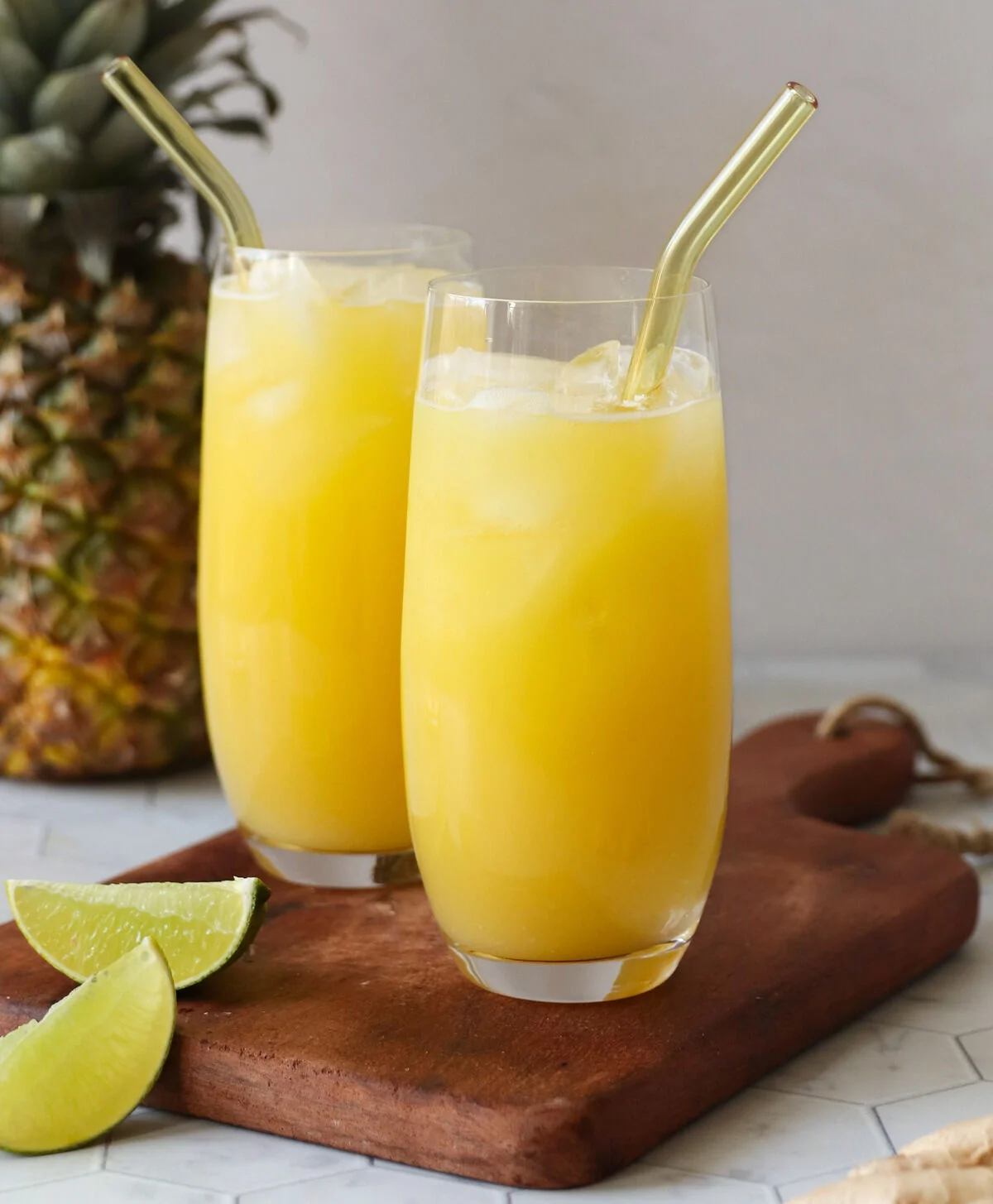
Juice Collection:
Efficient Harvesting:
Catch Every Drop: Place a clean container under the juicer’s spout to collect the ginger juice. Ensure that no juice is wasted during the extraction process.
Straining:
Smooth Texture:
Remove Pulp: For a smoother consistency, strain the ginger juice through a fine-mesh sieve or cheesecloth to remove any remaining pulp and fibrous material.
Health Benefits:
What Are the Health Benefits of Juicing Ginger?
Juicing ginger unlocks a plethora of health benefits, making it a valuable addition to your diet.
Anti-Inflammatory Properties:
Reduce Inflammation:
Combat Inflammation: Ginger contains potent anti-inflammatory compounds, such as gingerol, which help reduce inflammation and can alleviate symptoms of conditions like arthritis and other inflammatory diseases.
Digestive Aid:
Improve Digestion:
Ease Indigestion: Ginger juice aids digestion by stimulating digestive enzymes and gastric motility. It can help relieve nausea, motion sickness, and indigestion.
Immune Boosting:
Strengthen Immunity:
Fight Infections: Rich in antioxidants, ginger juice boosts the immune system and helps fight off infections and illnesses. Regular consumption can enhance overall health and resilience.
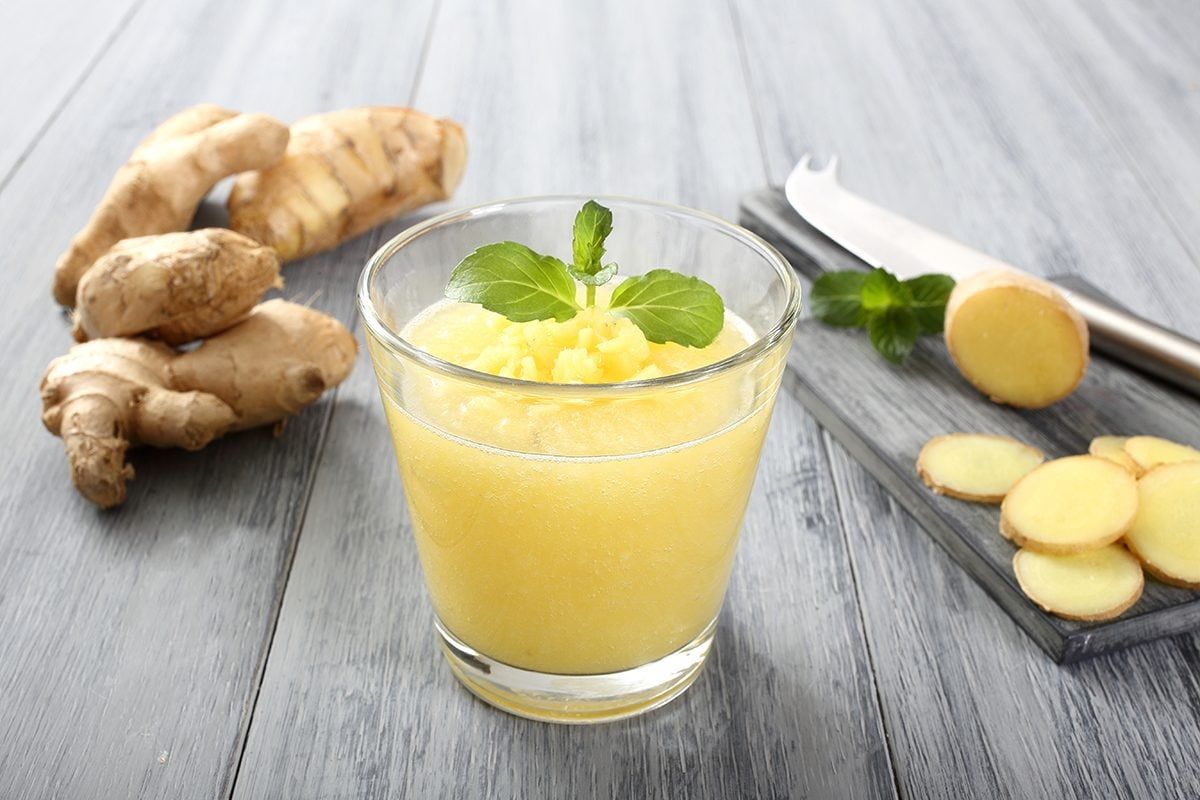
Pain Relief:
Alleviate Pain:
Natural Analgesic: Ginger’s analgesic properties make it effective for relieving different types of pain, including menstrual pain, migraines, and muscle soreness.
Anti-Oxidative Effects:
Combat Oxidative Stress:
Protect Cells: The antioxidants in ginger juice combat oxidative stress, protecting cells from damage caused by free radicals. This can contribute to better skin health and reduced aging signs.
Culinary Uses:
How Can You Incorporate Ginger Juice into Your Diet?
Incorporating ginger juice into your diet can be both tasty and beneficial.
Ginger Shots:
Concentrated Boost:
Morning Kickstart: Ginger shots are popular for their potent flavor and health benefits. Take a small shot of pure ginger juice in the morning for an energy boost and to kickstart your metabolism.
Smoothie Enhancer:
Flavor and Health:
Add to Blends: Add ginger juice to your favorite smoothies for an extra kick of flavor and health benefits. It pairs well with fruits like pineapple, mango, and berries, adding a spicy zing to your drink.
Salad Dressings:
Culinary Twist:
Zesty Dressings: Incorporate ginger juice into salad dressings for a fresh and spicy twist. Mix it with olive oil, lemon juice, honey, and your favorite herbs for a delicious dressing.
Tea and Beverages:
Refreshing Drinks:
Soothing Teas: Add ginger juice to hot or cold teas, lemonades, or other beverages. It enhances flavor and provides soothing effects, especially beneficial for colds and sore throats.
Marinades and Sauces:
Cooking Addition:
Flavor Infusion: Ginger juice can be used in marinades for meats and vegetables or added to sauces for an extra layer of flavor. It works particularly well in Asian-inspired dishes and barbecue sauces.
Potential Side Effects:
What Should You Be Aware of When Juicing Ginger?
While ginger juice offers numerous benefits, it’s important to be aware of potential side effects.
Digestive Sensitivity:
Mild Irritation:
Monitor Intake: For some individuals, especially those with sensitive stomachs or gastrointestinal conditions, ginger juice may cause mild irritation or digestive upset. Start with small amounts to gauge your tolerance.
Blood-Thinning Effects:
Consult Healthcare Providers:
Medication Interference: Ginger can have blood-thinning effects, which may interfere with medications like anticoagulants. Consult your healthcare provider if you are on such medications or have bleeding disorders.
Allergic Reactions:
Rare but Possible:
Check for Allergies: Although rare, some people may have an allergic reaction to ginger. Symptoms can include rash, itching, or difficulty breathing. Discontinue use and seek medical advice if you experience any allergic symptoms.
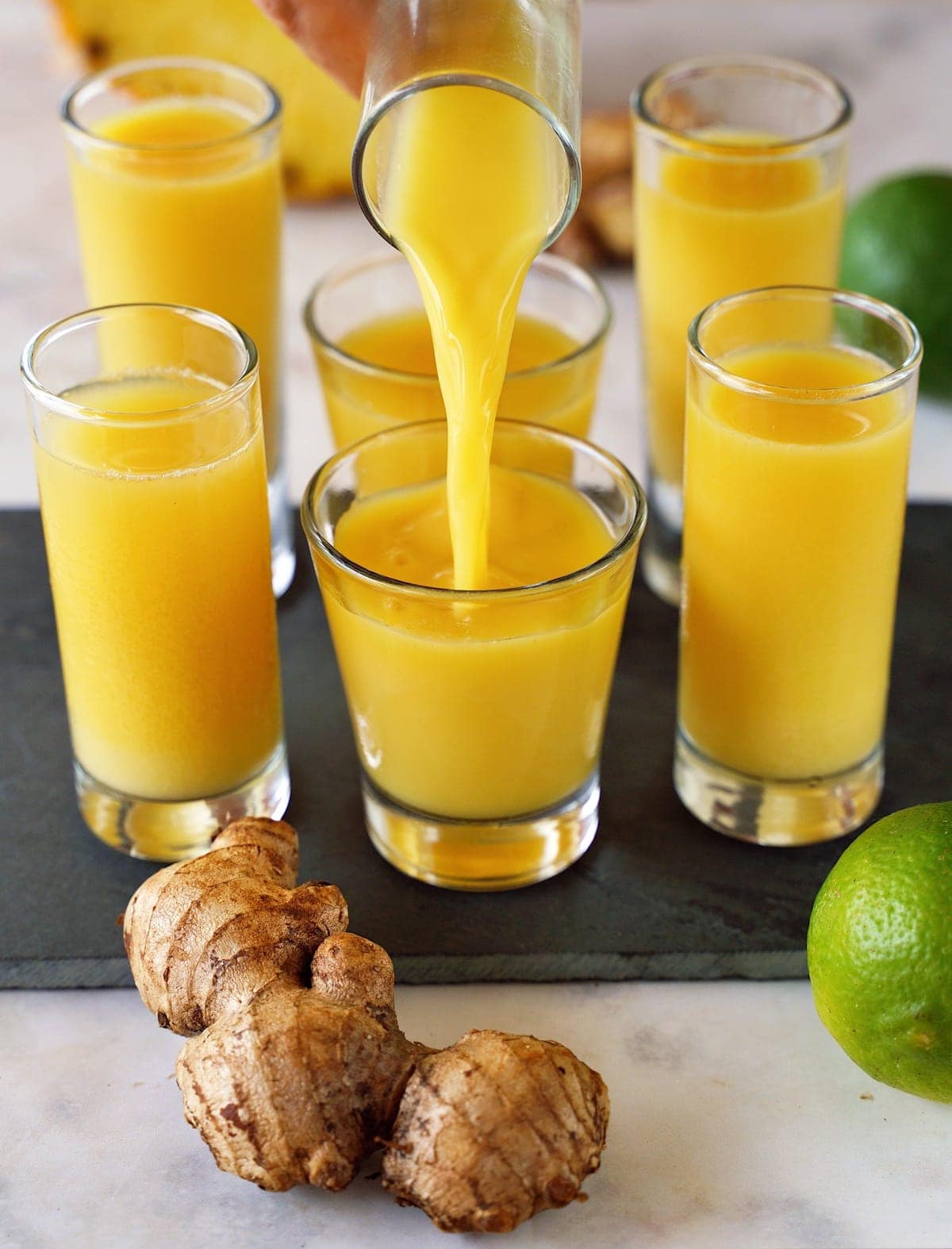
Storage and Preservation:
How Can You Store Ginger Juice?
Proper storage extends the shelf life and maintains the quality of ginger juice.
Refrigeration:
Short-Term Storage:
Freshness Preservation: Store ginger juice in an airtight container in the refrigerator. It stays fresh for up to five days. Use opaque containers to protect it from light, which can degrade its nutrients.
Freezing:
Long-Term Use:
Ice Cube Trays: For long-term storage, freeze ginger juice in ice cube trays. Once frozen, transfer the cubes to a freezer-safe bag. This method allows for easy portion control and extends the juice’s shelf life for several months.
Quality Check:
Regular Inspection:
Spoilage Signs: Regularly check stored ginger juice for signs of spoilage, such as an off smell or change in color. Discard any juice that appears spoiled to avoid potential health risks.
Conclusion
Juicing ginger is a straightforward process that unlocks numerous health benefits and culinary possibilities. Using the right type of juicer, preparing the ginger properly, and following systematic juicing steps ensure you get the most out of this powerful root. From its anti-inflammatory and digestive benefits to its versatile use in shots, smoothies, teas, and marinades, ginger juice is a valuable addition to a healthy diet. By being aware of potential side effects and adopting proper storage practices, you can enjoy the benefits of fresh ginger juice conveniently and safely.





